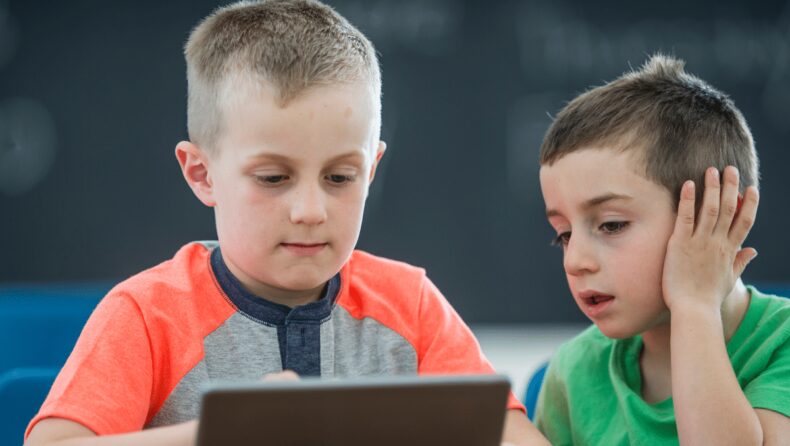Education is not the learning of facts, but the training of minds to think” –
Albert Einstein.
Today’s learners are digital natives; they grew up with new technology. The conventional learning methods are changing, and the education sector is adapting to the new age norm.
Gamification of studies makes students more interested in the learning process and does not make it boring.
The modern era requires a brain to be developed 360 degrees, which cannot happen by conventional teaching methods. Gamification has simplified the process. Kids are well versed with technology, colourful images and fun videos.
The field of education is adapting to the new changes for the healthier growth of the students. Gamification includes all the methods of how a child perceives information.
It encourages kids to learn without the pressure of studying, and kids are motivated to learn by themselves.
As new games have continued to develop, teaching and learning complex structures have become interesting. Adolescents have learned to code and perform more complex-level programming.
Interactive games and visual block programming are some methods introduced to encourage the new generation to look behind the surface of games and create an interest in developing games.
The pandemic pushed education institutes to have a different outlook toward learning.
Technology-driven education
A survey conducted by the first book, the nonprofit, asked teachers who use digital tools and how they utilize them.
The survey found 52% used digital tools every day, and nearly 80% used games, apps and ebooks several times a week.
In 2017, a similar survey of educators found that only 16% of teachers reported using digital tools daily, and another 27% used them multiple times a week.
The incorporation of games as a learning tool is a continuously evolving process.
It is a game, and games are easy and fun.
While playing, children don’t know that they are learning, but their minds are getting trained simultaneously. There is no pressure of learning and exams.
Creative ways to involve Gamification in the classroom
Gamification in the Music Industry: Furtados School of music recently introduced Gamification called the music buddy.
It is an online assessment tool embedded in live classes to make the learning process more enjoyable.
It is trained to teach students a structured curriculum and lets students play and sing along with it. It judges students based on their performance and promotes them on the levels designed to evaluate their progress.
AI supports the JEE and NEET students to prep effectively :
An AI-powered test assessment is introduced to prep students for JEE and NEET exams.
It delivers personalized solutions and formative learning solutions to evaluate an individual’s performance and help them score higher most effectively and efficiently. It will be accessible through the web, iOS, and android.
How does Gamification help students?
The growth is visible
Through the Gamification of studies, students learn subconsciously. Clearing every level makes them realize that they are improving.
When a new level unlocks or rewards and prices, it is visible to kids that they progress.
Students Are Already Familiar With The Concept Children start playing games on phones and tabs since they are toddlers. So, by the time they become adolescents, they are well familiar with the concept of games.
The gamification starters when they play games that are imbibing educational values. The process of Gamification is an age-old concept.
Games like scrabble, chess, jigsaw puzzles, and crosswords etc., trains the mind in ways that someone cannot teach. Now, Gamification is a mixture of technology and games.
Causes Learning Addiction (And It’s a Good Thing)
Playing games is not considered a serious thing, and it is played without any external pressure. Playing and winning.
Education is made game-like in order to motivate kids to achieve their goals. Frequent rewards points, and interaction with classmates online serves as motivation.
Because the game is not perceived as severe, there is no pressure to try again even if they fail. The failure in games has nothing to do with real life, so there is no shame.
All these factors make games addictive, and this addiction proves to be fruitful when the games are about learning.
More engagement with learning
Games are fun things, and kids are self-motivated to play; their interest is at its peak. They are consciously involved in the activities. There are no factors like boredom or daydreaming; it is an active engagement.
The positive approach to failure
Failure is an inseparable part of education. For ages, teachers have resorted to shaming and slamming methods that affect sensitive kids to a certain extent. It has a lot of social factors attached to it.
There is a compulsion of winning in the real world. Education is a process of learning and not winning, and a game helps kids learn with their peers freely.
A playful approach leaves out the fear of the possibility of failure. They learn to try again after failing at a level. This habit comes into practice in real-life subconsciously.
“Human minds are social plug-and-play devices, and they are meant to grow in social networks. Games allow a student to develop “Collective intelligence.”
Kids play every time except when in school.
But when games are designed to learn, either you change the games, “making them more schoolish,” or change the measurement terms – remarked by James Gee, a professor at Arizona State University, majored in philosophy and linguistics from Stanford.
A playful approach can change the face of education. It will go from being something that needs to be done to a fun and engaging process of developing a human mind that possesses incredible treasure.
“In every job that must be done there is an element of fun” – Mary Poppins.













